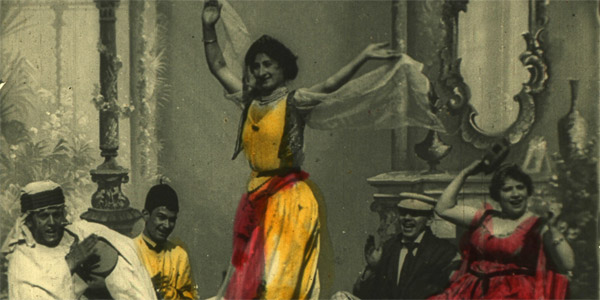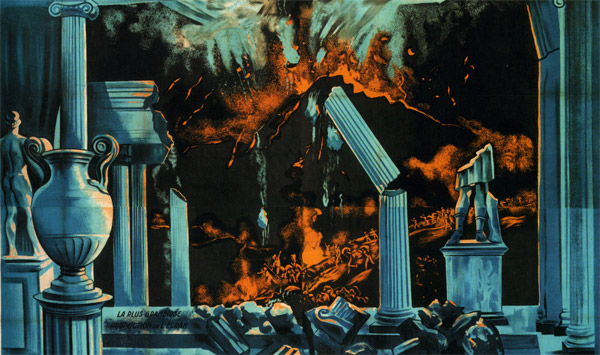Workshops

Views from Ottoman Empire 1896-1914
Film Screenings and Workshop / 1-2 July 2014
European film archives hold scores of films from the period 1896-1914 shot in the territory of the Ottoman Empire. Unknown, forgotten, hidden behind the wall of the Great War that marked the end of vast multinational empires, these moving images from more than a century ago deserve to be screened and seen today. They clearly have dimensions beyond the discipline of film history; they might be valuable documents for people from those parts of the world and interesting source material for specialists able to interpret their content within a broader cultural and historical context.
The screenings and discussions are open to the public. We invite you to join us in talking about the films, trying together to uncover what they contain from many points of view and many research fields, such as history and film history in all their ramifications, ethnography, cultural sciences and performative arts.
Mariann Lewinsky, Curator (Zürich), Elif Rongen-Kaynakçi, Film Archivist (EYE Filmmuseum Amsterdam), Jay Weissberg, Researcher (Rome), Nezih Erdogan, Scholar (Istanbul Sehir University)
The workshop will be held in english and italian You can register in advance or ad hoc
Tuesday 1 July
10.15-12.00
Screening Session 1
Archival Questions and a First Overview
The opening films set the outline for our field timewise. The very first moving images from the territory of the Ottoman Empire are by Lumière cinematographer Alexandre Promio from 1896-1897, while the Gaumont newsreel Vainqueurs et vaincus (1912) shows footage from one of the many wars, revolts, occupations, and annexations that eventually would bring about its end. Both films also represent exemplary case studies of archival problems such as the identification and dating of material, or the changes a film might have undergone since its production. The array of material in this first programme demonstrates the variety of genres produced and screened before World War I and the heterogeneous nature of the images. Some films were made with the intention of depicting lands and peoples, in styles hovering between ethnographic observations and picturesque illustrations of a tourist guidebook; others staged figments of the Imaginary Orient generated by a wild mixture of cultural sources, from the Bible to the vaudeville stage of the 19th century.
14.30-15.45
Discussion
16.15 -17.45
Screening Session 2
Everyday Life and Travellers' Tales
Cinema opened up the world for those who could not afford to travel. Before this, people experienced virtual voyages to the Orient through reading books by travellers such as Pierre Loti or visiting a World Exhibition. While films do have a compelling immediacy, bringing the viewer into eye contact with faraway times and places, we film historians and archivists often are unable to recognize what we see. We simply lack the knowledge to recognize the clues that could tell us where a film was shot, for example, or if a film might be a particularly valuable document, and why.
Wednesday 2 July
10.15-12.00
Screening Session 3
Territories, Borders - and Colonialism
Filming started in 1896, and while trying to put together a programme presenting a Grand Tour of the Ottoman Empire, from Bosnia to the Maghreb, with Constantinople at its centre, we realized that many extant films from 1896-1914 were shot in regions then no longer part of the Ottoman Empire, such as Algeria and Tunisia (occupied by France in 1830 and 1881 respectively), or only nominally Ottoman, such as Egypt (controlled by Britain since 1882). So, is it now legitimate to use the Ottoman Empire as a matrix, as a key of access to retrieve a corpus of films for viewing and for research? Or was our approach a (hopefully productive) false start?
Discussion

The Irresistible Attraction of Antiquity II
Film screenings and workshop 4 - 5 July 2014
Last year's workshop dedicated to the intense relationship between silent cinema and antiquity was so inspiring and thought-provoking that we decided to revisit the experience. This time our two main topics were set by Cabiria (1914): ‘Orientalism’ and ‘Film and the Other Arts’. The ancient world of silent cinema emerged out of the art forms of the nineteenth century. The new technology regularly drew on popular culture but it also attempted to position itself as an extension of high culture, as an art that could reach beyond working-class audiences. The ancient Orient, for example, had already been provided with violent narratives (as in Flaubert’s novel Salammbô), exotic iconography (the paintings of Gérôme), sinuous movement (the dances of multiple Salomes), and emotional music (productions of Verdi’s opera Aida). Early cinema sought legitimacy by drawing on such prestigious art forms and, in the process, it sought to outperform the other arts. Silent cinema learned to animate historical novels, to give movement to paintings, and to break open the frame of the proscenium theatre. In nineteenth-century representations of the ancient world, silent cinema found the materials on which to build its ambition to become a modern Muse consuming all the others. The workshop comprises curated viewings and open discussions and draws on the expertise of classicists, film historians, archivists, and (we hope) yours.
Ivo Blom, Vrije Universiteit Amsterdam (i.l.blom@vu.nl); Mariann Lewinsky, Curator for Cinema Ritrovato (mstraeuli@bluewin.ch); Pantelis Michelakis, University of Bristol (P.Michelakis@bristol.ac.uk); Maria Wyke, University College London (m.wyke@ucl.ac.uk)
The workshop will be held in english and italian You can register in advance or ad hoc
Friday 4th July
10.15-13.00
Screening of a variety of antiquity films associated with the other arts
Paintings were the main artistic source of imagery for silent films set in ancient Greece or Rome, or Palestine (Christus 1914-16). But once you become attentive, an astonishing array of arts concerned with antiquity surface, such as landscape architecture and interior decoration (La perfetta ebbrezza 1920), revue (The Folly of Vanity 1924), or opera (L’Etoile du génie 1914 – about Caligula). La reine de Saba (1912) plays out in spectacular style the biblical story of Solomon and the Queen of Sheba (1 Kings 10) - a favourite of painting and opera. The queen’s African kingdom is unveiled as a seductive Orient of exotic music and dance, distant in culture as well as space from the kingdom of the Israelites.
14.30-15.45
Discussion (Sala Cervi)
20.30-23.30
Screening of Cabiria (1914)
One hundred years after its first release, Cabiria still displays its innovative character and its capacity for wonder. Rome is never shown, instead we observe a marvelously grand spectacle of Oriental cruelty and sophistication against which the Roman empire struggles and wins. Yet it is neither the heroine torn as a child from her home near Etna nor the hero who rescues her and takes her back to Rome that in the end we remember. But Maciste the compassionate and forceful Numidian slave and Sophonisba burning with frustrated desires.
Saturday 5th July
14.30-16.30
Screening of Christus (1914) and Escursione nell’alto Egitto (1914)
Christus is a life of Christ on an epic scale, shot on location in Italy and Egypt. Earthly civilisations are diminished by the new religion, as when we see the living Christ meditating on God’s heavenly power before the monumental ruins of an Egyptian temple complex. Along the way, you can spot beautiful renditions in movement of celebrated religious paintings by Leonardo di Vinci, Raphael, Michelangelo and many others.
16.45-18.00
Discussion (Sala Cervi)
Documenti
Tipo di File: PDF Dimensione: 1.12 Mb
Tipo di File: PDF Dimensione: 1.05 Mb










